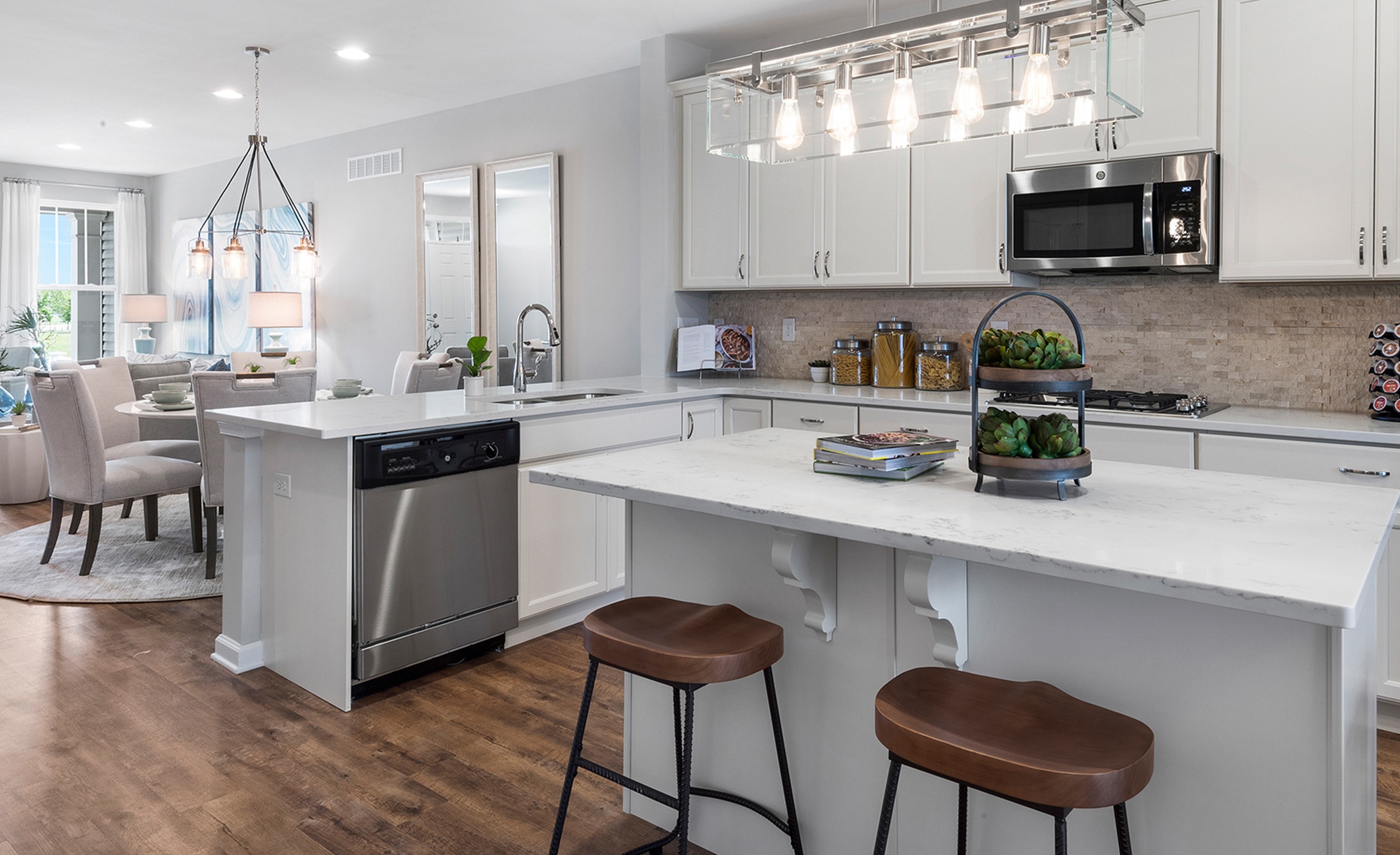Kitchen flooring materials have to be durable, long-lasting, and beautiful. Choosing the right kitchen flooring material can be a challenge! There are many types of flooring materials available to modern homeowners. Knowing the advantages and disadvantages of each kind of kitchen flooring can help you decide which one is right for you.
Wood
Wood is a classic flooring material that has been used in kitchens and other rooms for literally hundreds of years. Its timeless beauty can improve the value of your home, and make your home more appealing to buyers in the event that you should ever decide to sell.
There are many species of wood, each with its own character and appearance. Whether you choose maple, oak, or pine, hardwood flooring will no doubt add something special to your kitchen. Wood can also be finished to be in different colors, ranging from deep, dark brown to bare, naked wood.
Water resistance is important for a kitchen flooring material, but wood can be highly water-resistant if it is properly finished. Your home builder or contractor can ensure its water resistance by sealing the wood properly after it's installed.
How to Care for Hardwood
Dry mop hardwood floors regularly. Mop with water only occasionally to protect the wood from moisture damage.
Wood can be scratched or dented by chair legs, high heel shoes, and pet claws. You'll need to protect your hardwood floors by placing felt pads on chair legs, trimming pet claws, and by avoiding the use of high heel shoes in the kitchen.
Hardwood floors need to be refinished periodically before the sealant wears off. This is especially important in the kitchen, where spills from food and water drips from the sink can cause damage if the floors are unprotected.

Ceramic Tile
Nonslip ceramic tile is attractive and durable. Well-chosen ceramic tile can last decades in your kitchen, especially if you choose a timeless tile design. This type of flooring comes in a variety of colors and textures and can be made to mimic the look of hardwood and stone.
Ceramic tile can be cold underfoot and loud when shoes walk on it. It's also very hard, leading jars and plates to shatter easily when dropped.
How to Care for Ceramic Tile
Ceramic tile is easy to clean, requiring regular sweeping and mopping with soapy water. Ceramic tile is not sensitive to water and doesn't need to be sealed or refinished like hardwood.
However, the grout between tiles can become stained and difficult to clean. Some homeowners seal grout to make it more stain-resistant and easier to clean, while other homeowners choose dark-colored grout so it doesn't show dirt as easily. Your home builder can help you decide which kitchen flooring design and grout color is best for your kitchen.
Vinyl
Vinyl is a relatively affordable option for homeowners on a budget. Vinyl tile can come in a variety of colors and textures that mimics the look of hardwood and stone. Vinyl is more affordable than materials like hardwood and stone, and it's softer than these other materials, which means that items dropped on vinyl tile may be less likely to break.
Vinyl is also highly water-resistant and never needs to be resealed or refinished. Although it's not as high-end as wood or stone, it's an excellent option for homeowners with children and pets, because of its durability.
How to Care for Vinyl
Vinyl needs regular sweeping and mopping to stay clean. You can use a dry mop for daily cleaning, and a wet mop for cleaning every few days.
Stone Tile
Stone tile is attractive and highly durable. It's also long-lasting, which means that once you've installed stone tile in your kitchen, you may never need to install another type of tile in your home.
Some types of stone need to be sealed periodically in order to increase stain resistance, while other types of stone do not need to be sealed. It's important to choose your stone tile carefully, as some types of stone are softer, easier to scratch, and easier to stain than others.
Work with a home builder who knows the various types of materials and can help you choose a stone tile that will look right in your kitchen. Like ceramic tile, the grout in between stone tiles can become stained. You can avoid this problem by sealing the grout or by using dark-colored grout.
What are the downsides to stone? Some types of stone can be slippery, so take care to avoid stone that is highly polished. It's also very cold, loud, and brittle, just like ceramic tile.
How to Care for Stone Tile
Stone tile can be swept and mopped. The grout and stone may need to be sealed regularly - check with your builder to find out.
Laminate
Laminate can be made to imitate wood, but unlike hardwood, it's naturally waterproof. Laminate also never needs to be refinished or protected from chair legs and dining table legs, so it's easier to maintain than wood.
How to Care for Laminate
Laminate needs regular sweeping and mopping to stay clean. You can use a dry mop for daily cleaning, and a wet mop for cleaning every few days.
Choosing Best Flooring For Kitchen? Work With Your Home Builder
If you're building a luxury home, your home builder may have some suggestions that can help you make a decision. Get kitchen flooring design ideas from your home builder.
Ask your builder what type of materials are most popular among homeowners today, and what they recommend for the house that you're constructing. Your builder may have recommendations based on your home layout, your expressed preferences, and other factors.
At Blenheim Homes, we help homeowners decide which materials are best for their kitchen. See our Kitchen Visualizer to make your decision easier.





